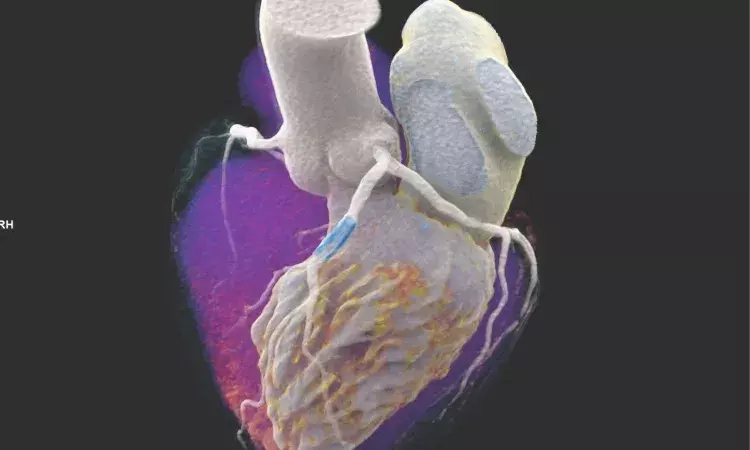- Home
- Medical news & Guidelines
- Anesthesiology
- Cardiology and CTVS
- Critical Care
- Dentistry
- Dermatology
- Diabetes and Endocrinology
- ENT
- Gastroenterology
- Medicine
- Nephrology
- Neurology
- Obstretics-Gynaecology
- Oncology
- Ophthalmology
- Orthopaedics
- Pediatrics-Neonatology
- Psychiatry
- Pulmonology
- Radiology
- Surgery
- Urology
- Laboratory Medicine
- Diet
- Nursing
- Paramedical
- Physiotherapy
- Health news
- Fact Check
- Bone Health Fact Check
- Brain Health Fact Check
- Cancer Related Fact Check
- Child Care Fact Check
- Dental and oral health fact check
- Diabetes and metabolic health fact check
- Diet and Nutrition Fact Check
- Eye and ENT Care Fact Check
- Fitness fact check
- Gut health fact check
- Heart health fact check
- Kidney health fact check
- Medical education fact check
- Men's health fact check
- Respiratory fact check
- Skin and hair care fact check
- Vaccine and Immunization fact check
- Women's health fact check
- AYUSH
- State News
- Andaman and Nicobar Islands
- Andhra Pradesh
- Arunachal Pradesh
- Assam
- Bihar
- Chandigarh
- Chattisgarh
- Dadra and Nagar Haveli
- Daman and Diu
- Delhi
- Goa
- Gujarat
- Haryana
- Himachal Pradesh
- Jammu & Kashmir
- Jharkhand
- Karnataka
- Kerala
- Ladakh
- Lakshadweep
- Madhya Pradesh
- Maharashtra
- Manipur
- Meghalaya
- Mizoram
- Nagaland
- Odisha
- Puducherry
- Punjab
- Rajasthan
- Sikkim
- Tamil Nadu
- Telangana
- Tripura
- Uttar Pradesh
- Uttrakhand
- West Bengal
- Medical Education
- Industry
Photon-counting CT system promising for coronary artery disease imaging, study finds

France: Coronary CT angiography (CCTA) with a photon-counting CT system improves image quality and diagnostic confidence among reader compared with an energy-integrating dual-layer CT, says a recent study.
"Photon-counting CT compared with traditional CT for CCTA for coronary artery disease (CAD) offers a number of benefits," Salim A. Si-Mohamed and colleagues wrote in their study published in the journal Radiology.
The team noted that soft-tissue contrast, spatial resolution, and dose-efficient capabilities of photon-counting CT (PCCT) potentially allows a better quality and diagnostic confidence of coronary CT angiography versus conventional CT. Considering this, they aimed to compare the quality of CCTA scans obtained with a clinical prototype PCCT system and an energy-integrating detector (EID) dual-layer CT (DLCT) system in a prospective board-approved study with informed consent.
Subjects with coronary artery disease underwent retrospective electrocardiographically gated CCTA with both systems after injection of 65–75 mL of 400 mg/mL iodinated contrast agent at 5 mL/sec. The researchers performed a prior phantom task-based quality assessment of the detectability index of coronary lesions.
For PCCT (1024 matrix, 0.25-mm section thickness) and EID DLCT (512 matrix, 0.67-mm section thickness), ultra-high-resolution parameters were used. A blinded analysis using a five-point quality score was independently performed by three cardiac radiologists for overall diagnostic confidence, image quality, and diagnostic quality of stents, calcifications, and noncalcified plaques. To evaluate the proportion of improvement in scores with the best method, a logistic regression model, adjusted for radiologists, was used.
The study enrolled fourteen consecutive participants (12 men; mean age, 61 years ± 17).
Based on the study, the authors found the following:
- Scores of overall quality and diagnostic confidence were higher with PCCT images with a median of 5 and 5 versus 4 and 4 with EID DLCT images, using a mean tube current of 255 mAs ± 0 versus 349 mAs ± 111 for EID DLCT images.
- Proportions of improvement with PCCT images for quality of calcification, stent, and noncalcified plaque were 100%, 92%, and 45%, respectively.
- In the phantom study, detectability indexes were 2.3-fold higher for lumen and 2.9-fold higher for noncalcified plaques with PCCT images.
To conclude, photon-counting CT system outperformed an energy-integrating detector dual-layer CT system in improving diagnostic confidence and image quality of coronary CT angiography. This represents a step forward in realizing the promise of this technology for coronary artery disease imaging.
Reference:
The study titled, "Coronary CT Angiography with Photon-counting CT: First-In-Human Results," was published in the journal Radiology.
Dr Kamal Kant Kohli-MBBS, DTCD- a chest specialist with more than 30 years of practice and a flair for writing clinical articles, Dr Kamal Kant Kohli joined Medical Dialogues as a Chief Editor of Medical News. Besides writing articles, as an editor, he proofreads and verifies all the medical content published on Medical Dialogues including those coming from journals, studies,medical conferences,guidelines etc. Email: drkohli@medicaldialogues.in. Contact no. 011-43720751


